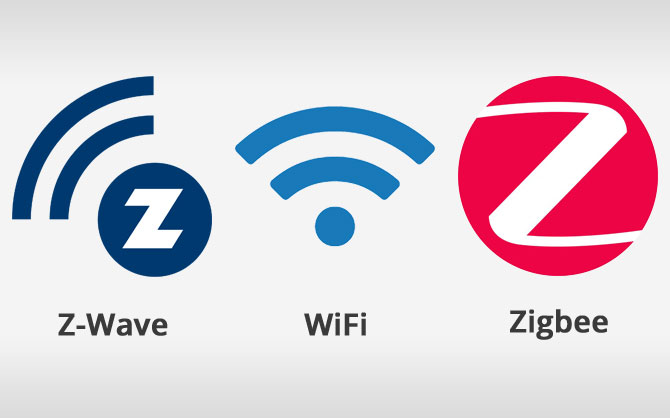
biquitous wireless protocol that powers our laptops, smartphones, and home networks. Its familiarity and widespread use make it an attractive option for smart home devices, especially those that require high bandwidth.
Range and Coverage: Who Goes the Distance?
Z-Wave: Mesh Magic for Extended Reach
The mesh network architecture of Z-Wave enables signals to hop from one device to another until they reach their destination. This extends the effective range and ensures that devices in distant corners of your home can stay connected.
Zigbee: Efficient, but Limited
While Zigbee is energy-efficient, it tends to have a shorter range compared to Z-Wave. This makes it ideal for homes with a dense concentration of devices or for smaller living spaces.
Wi-Fi: The Power of Reach
Wi-Fi’s range can cover a substantial area, making it suitable for large homes or buildings. However, obstacles like walls and interference from other devices can affect the signal strength.
Power Consumption: Balancing Act for Battery-Operated Devices
Z-Wave: Striking a Balance
Z-Wave strikes a balance between range and power consumption. It’s energy-efficient enough to support battery-operated devices, but still maintains an extended range thanks to its mesh network.
Zigbee: Low-Power Champion
Zigbee shines when it comes to battery-powered devices. Its low-power consumption makes it the go-to choice for sensors, smart locks, and other devices that operate on limited battery life.
Wi-Fi: A Power-Hungry Option
Wi-Fi tends to consume more power compared to Z-Wave and Zigbee, which can be a drawback for battery-operated devices. However, this is offset by its higher data transfer rates.
Interoperability: Can They Play Nice Together?
Z-Wave: The Alliance Advantage
The Z-Wave Alliance ensures that certified devices are interoperable, providing consumers with a wide range of options from different manufacturers. This promotes a healthy ecosystem of compatible devices.
Zigbee: A Standard to Follow
Zigbee’s adherence to the IEEE 802.15.4 standard fosters interoperability among devices. However, the absence of a centralized authority like the Z-Wave Alliance can lead to some fragmentation.
Wi-Fi: The Universal Language
Wi-Fi’s widespread adoption means that it’s supported by a vast array of devices. This universality ensures that Wi-Fi-enabled devices from different manufacturers can seamlessly integrate into your smart home.
Security: Locking Out Unwanted Intruders
Z-Wave: Secure Communication
Z-Wave boasts robust security features, including AES 128-bit encryption. This ensures that your smart home devices communicate securely, protecting your data from potential intruders.
Zigbee: Built-In Security
Zigbee also incorporates security measures, with options for encryption and authentication. However, it’s important to note that the implementation of security features may vary among different Zigbee products.
Wi-Fi: Leveraging Existing Security Protocols
Wi-Fi benefits from the security protocols that are already well-established in the world of networking. WPA3 encryption, for instance, provides a high level of security for Wi-Fi-enabled smart home devices.
Conclusion: Making the Right Choice for Your Smart Home
As you navigate the landscape of smart home technology, the choice between Z-Wave, Zigbee, and Wi-Fi is a critical one. Each protocol brings its own strengths and considerations. Ultimately, the best option for your smart home depends on your specific needs, the size of your living space, and the types of devices you plan to integrate.
By understanding the nuances of each protocol, you can make an informed decision that lays a solid foundation for a seamless, connected, and intelligent living environment. Whether you prioritize range, power efficiency, interoperability, or security, there’s a smart home protocol that’s tailored to your preferences. Embrace the future of smart living with the protocol that aligns with your vision.







More Stories
5 Ways to Boost Data Security on the Cloud
Apple Black Friday Sales, iPhone 15 Pro rumors, Device Buying Guide
How Businesses Can Overcome Cybersecurity Challenges